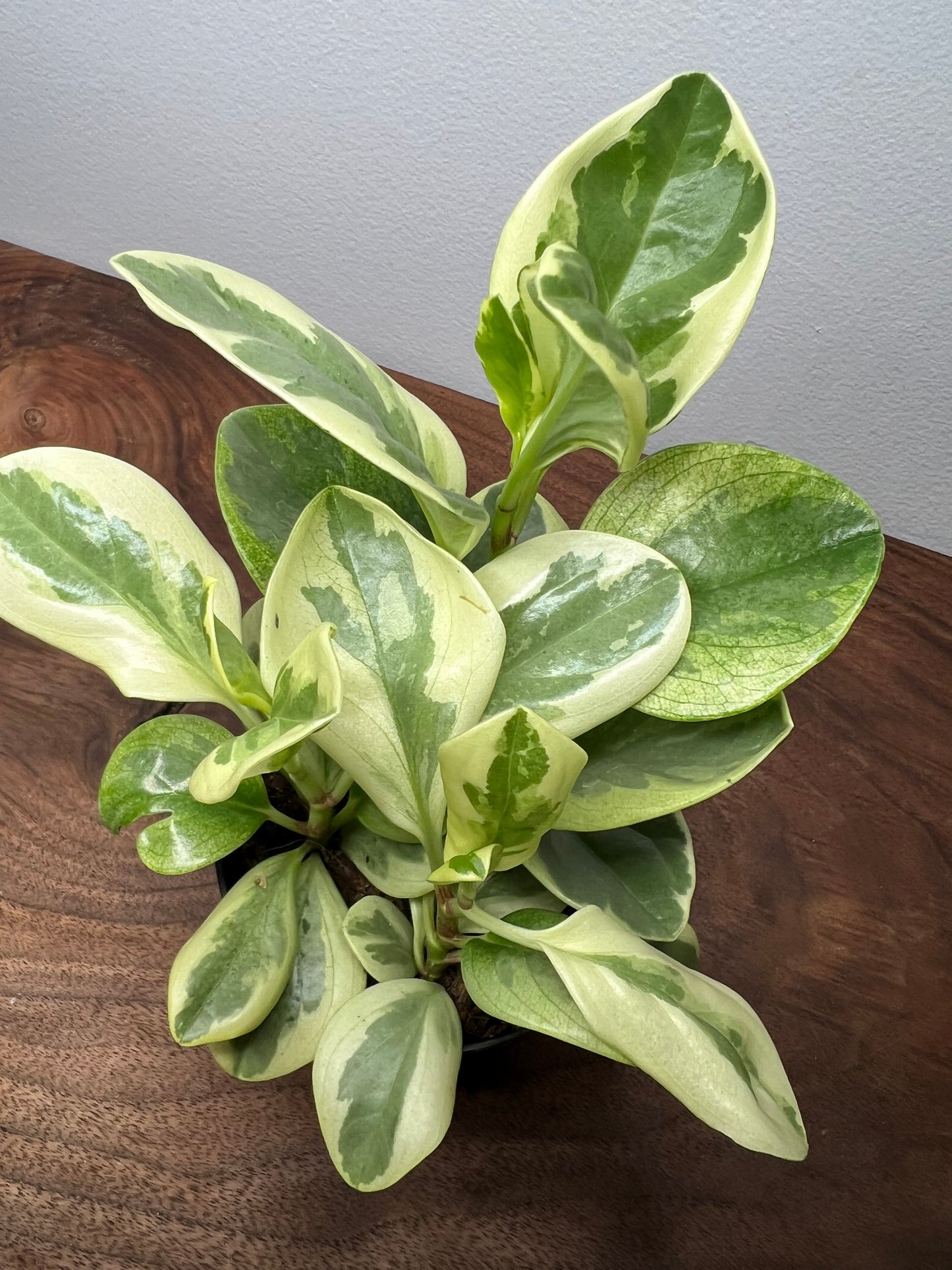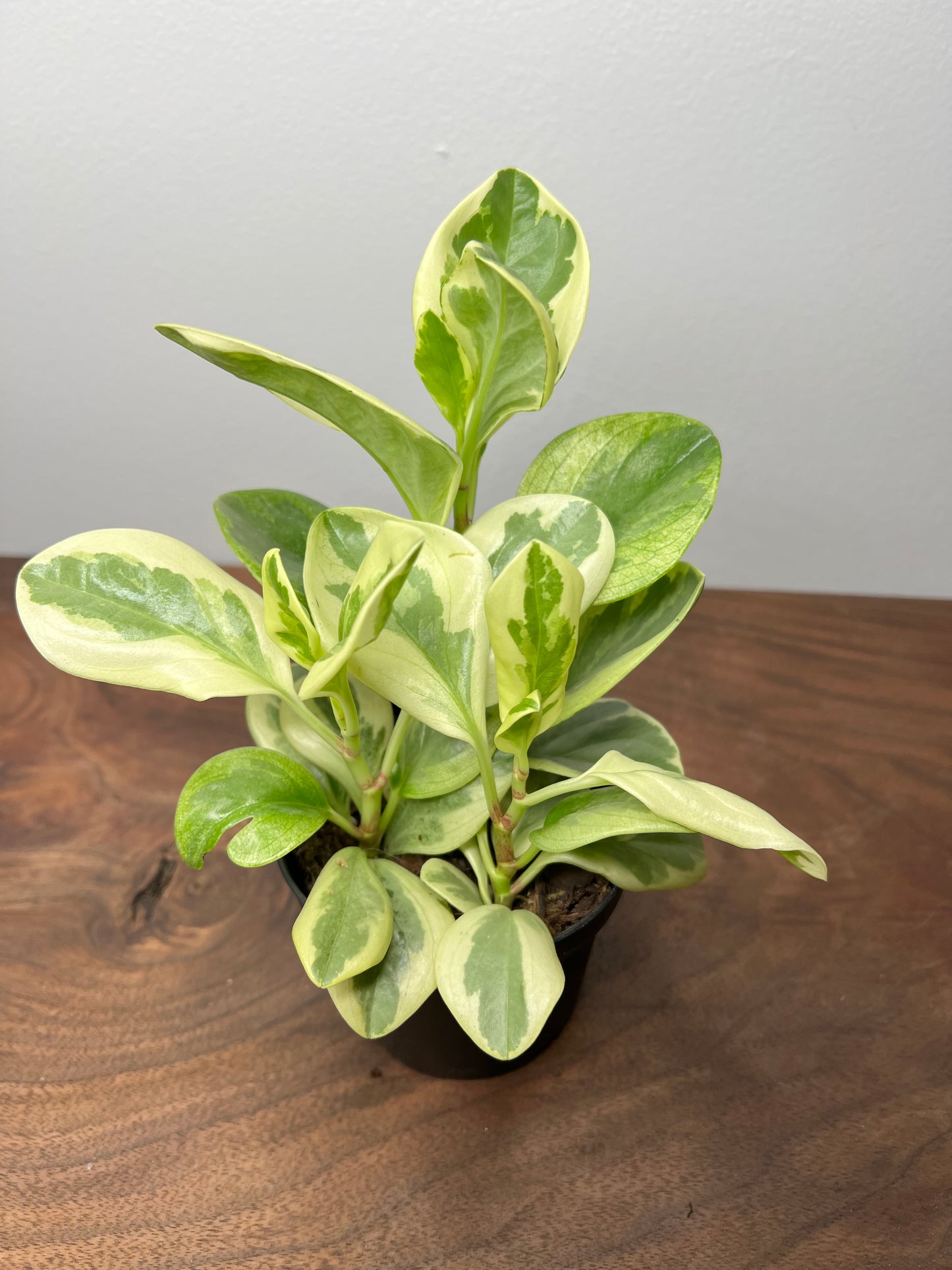The Rooted Plant Shop
Peperomia- spoonleaf variegated
Peperomia- spoonleaf variegated
Couldn't load pickup availability
Peperomia is a large genus of tropical plants in the family Piperaceae that are native to Mexico, South America, and the Caribbean. With more than 1,500 known species, these hearty plants. Drought tolerant plants, easy care.
If you haven't experienced much luck with flowering house plants, you will appreciate that the Peperomia sports ornamental foliage. Its leaves can be textured or smooth in red, green, gray, or purple; variegated, marbled, or solid; large, heart-shaped, round, pointed, or tiny.
Plants in the Peperomia genus can look so different from one to the next that it's difficult to discern if they are even related. For example, varieties like the Peperomia obtusifolia are commonly confused with rubber plants due to their similar appearance. All Peperomia plants are low maintenance, slow-growing, and can be planted all year long. Plus, they are considered clean-air plants.
Peperomia Plant Care
Here are the main care requirements for growing Peperomia plants indoors:
- Does best in medium to bright indirect light and should be protected from direct sunlight.
- Choose a potting mix that is loose and well-draining but still retains moisture well.
- Allow the soil to dry slightly between waterings. Be cautious of overwatering.
- Prefers warm temperatures and medium to high humidity. Not frost tolerant.
Light
Position your Peperomia in a spot that receives medium to bright light to maintain its vibrant foliage colors. Directly in front of a west- or east-facing window is ideal, or set a couple of feet back from a south- or north-facing window. Insufficient light will result in fewer leaves, leaf drop, and drab coloration. Direct sun rays should be avoided, as they can burn the leaves.
Soil
Many Peperomia plant species grow as epiphytes, which means in the wild, they might settle into the nook of a tree and send their roots into some slightly decaying bark. The key to a thriving Peperomia is choosing a soil blend that mimics these conditions—chunky, loose, and acidic. An orchid potting mix typically works well, but regular potting soil is fine, too. You can always lighten it with a handful of coco coir and perlite for good aeration.
Water
Allow the top two inches of the soil to dry out between waterings. Keeping the peperomia on the dry side is better than saturating it. Soggy soil can lead to root rot.2 The Peperomia has succulent-like leaves that indicate that these plants don't need frequent watering to maintain vigor.
Temperature and Humidity
Outdoors, Peperomia plants are hardy to zone 10, so they cannot handle freezing temperatures. As tropical plants, peperomia plants prefer a warm and steamy environment, especially in the summer months when their growth is most active. If your plant doesn't get an outdoor vacation in the summer, place it on a tray of pebbles and water to increase ambient humidity mist the plant regularly, or invest in a small-scale humidifier to place nearby. Alternatively, choosing a naturally humid room in the home, such as a bright bathroom, is a great choice for these humidity-loving plants. Move plants indoors before nighttime temperatures drop to 50 degrees Fahrenheit.
Fertilizer
When it comes to fertilizing peperomia plants, less is more. As a slow-growing epiphyte, the peperomia can go its entire life without supplemental fertilizer, getting what it needs from its planting media. However, if the soil is poor, use diluted liquid fertilizer once a month during the growing season. Do not fertilize in the winter.
Share


Let customers speak for us
from 327 reviewsRic Rac Cactus (fish bone) 8” basket

First off she worked with me specifically to where I could get both of these at a really good price and I just gotta say these are the best condition ones I’ve seen yet they are so beautiful and I will continue to be buying from the shop 100000/10❤️❤️❤️

It came so perfectly packaged. The plant was in perfect condition. And looks exactly like the photo definitely worth some money and I would buy it again. Love the shop overall.1000/100

I have been wanting to get a Jose bueno for awhile, all of my plants have been beautiful, well packaged and healthy. Thank you Mel for your commitment to educating your buyers, and selling such gorgeous plants.

Mel, Thank you so much for such good packaging for the shipment. I love watching the lives on TicTok.... Mimi51 All of your advice is so helpful. Have a blessed day!!!
My plant arrived happy and healthy! It’s doing well so far.

She arrived well packaged and healthy!

This plant met all of my expectations. Its incredibly beautiful. Packaged so well not one crumb of soil was lost or not even one lost leaf. 100% recommend I will definitely buy more from her!











